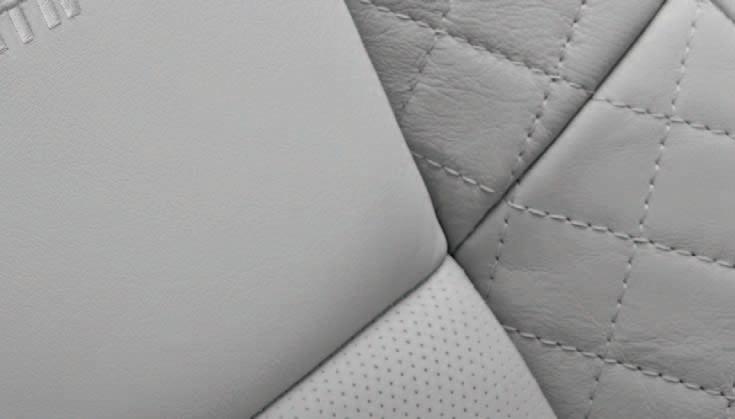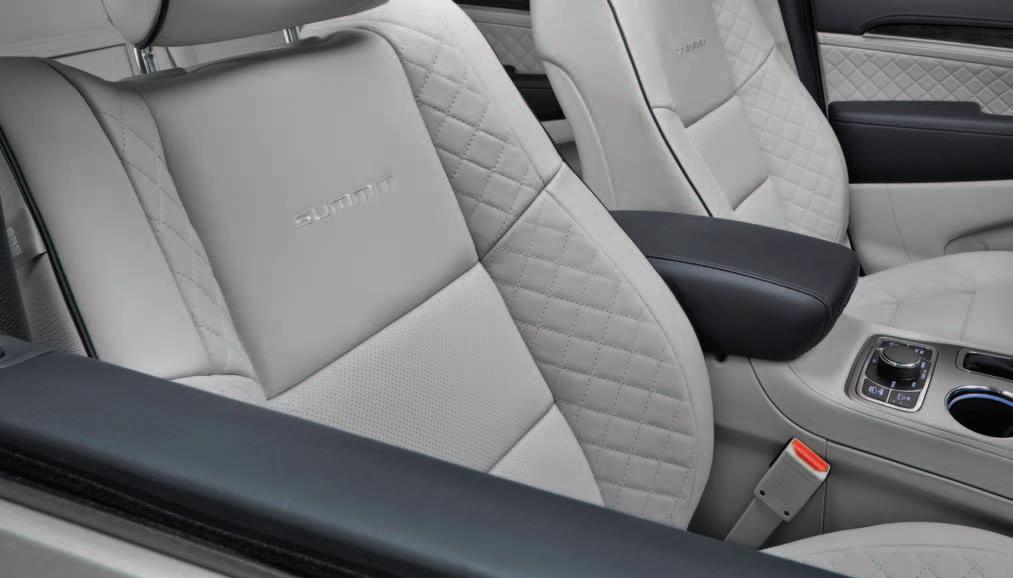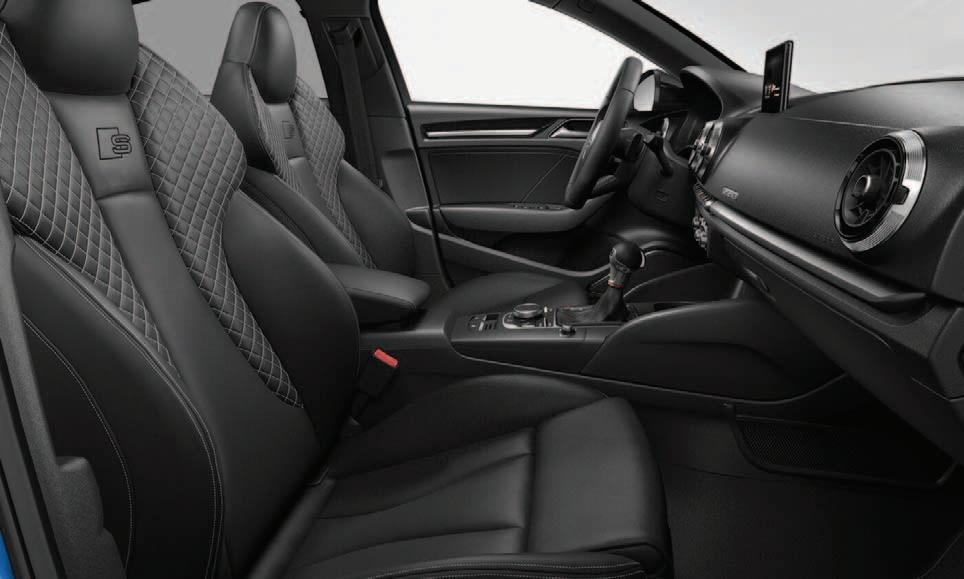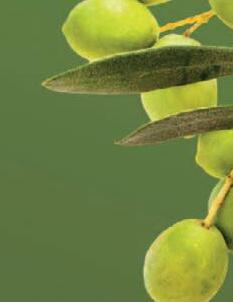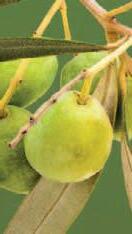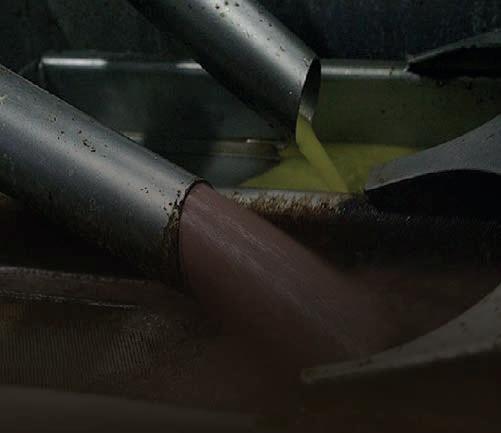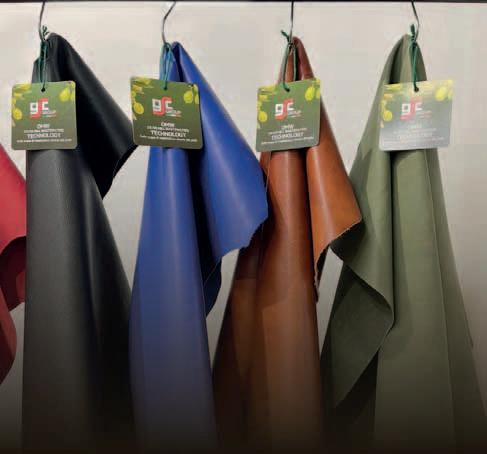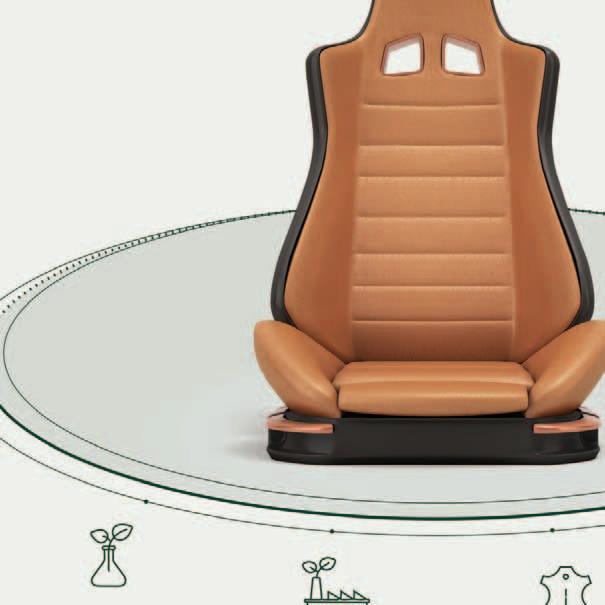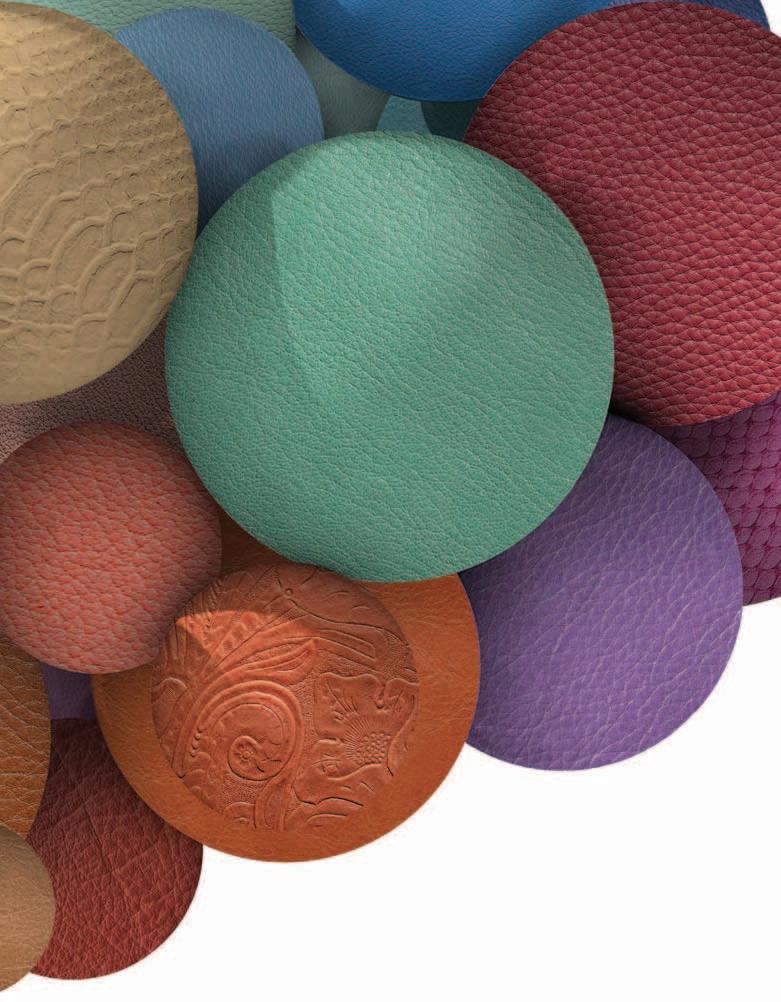Excellent –Bisphenol optimized syntans to achieve high leather quality
If you look at the tariffs and the current price levels at the same time, factoring the duties into the price of many hides means that the costs for collection, processing and transport are unlikely to be covered. In principle, this would mean that a sale to China would be more like a disposal with additional costs. The normal economic reaction is then to check what other alternatives and markets are available for the product and whether these could possibly offer a better result. In those other markets, and these are the majority of countries, where there are no counter-veiling tariffs on US hides at the moment, this will presumably exert considerable price pressure on the hides, at least in markets where other raw materials can be replaced with US hides.
Of course, this is only part of the problem. It is not just a question of where the rawhide should and can go, but also of quickly finding new locations for leather and finished leather product manufacturing, again taking into account possible final customs duties and costs. Individual alternatives may be found quickly for many things, as capacities are globally not fully utilised, but this is unlikely to be possible quickly for entire supply chains.
For the time being, the focus will probably be on by-passing third countries to get raw and wet blue hides to China. However, this will not help with tariffs that are then levied on finished goods coming back into the US. Under the given circumstances, the only option is to relocate production in its entirety away from China, at least for the products that are then to find their way back to the US.
The bilateral relationship between China and the US is therefore the strongest influencing factor on the leather value chain at the moment. If significant proportions of the production capacity and the sales market suddenly disappear at the same time, the difficulties this will cause for the remaining markets are self-evident. If a one-to-one replacement were possible under otherwise identical market conditions, then other countries might even be happy. However, this is not the case, as previously explained.
The fear now is not so much that leather, for example, might no longer be produced, but rather that the products already in the pipeline might have to find other markets. In the meantime, Europe is already discussing the possibility of the markets being flooded with consumer goods from China in the short term, which would of course put pressure on prices at the same time. What may please consumers on the one hand will be a major problem for the already hard-hit European industry on the other.
The situation also poses a major problem for China. The Chinese economy is already suffering and this would of course be massively accelerated if Chinese manufacturers were to seek a replacement for the lack of sales in the US in their domestic markets. This would also put massive pressure on prices and significantly increase the problems in China in terms of large capacity and a weakening of consumption.
In addition to all the clear problems in the economy as a whole, it should not be overlooked that the entire geopolitical situation, including tariffs, also has a considerable psychological impact. Leather remains an ‘optional’ material and is not a basic material anymore. With only a few exceptions, this means that leathergoods may suffer disproportionately in times of weaker consumer sentiment. Let us not forget that we already had great difficulties with leather sales before all these new problems and have been looking for ways out for years. The hope remains that in uncertain times, ‘value for money’ will count more again when you finally reach the consumer and get the message to the recipient.
The market for splits will certainly be an interesting topic in the near future. If leather production in China declines sharply now, there will certainly be a shortage of splits and split products. One of the key questions is whether this could be compensated for by imports of finished products. In addition, a further fall in the price of hides would of course open up more and more options for the direct production of collagen and gelatine. If, for the leather industry itself, there is also less material available in China, it would be in direct proportion to the possible decline in demand for leather owing to shrinking exports. In any case, the same imbalances that we see in the general leather market are also building up in this sector.
The market for sheepskins has not yet reacted to the new situation. However, the importance of this sector is not the same as that of cattle hides. Of course, China is home to important processors of sheepskins, but they do not only produce in China and do not play such a significant role in the overall market.
Making forecasts for the near future is probably not very reliable at the moment. It is hard to imagine that the rifts between China and the US can be mended quickly with the current leaders on either side. Even a correction to the tariffs and individual agreements would not make the general mistrust disappear. Added to this is the major concern on both sides of the dispute for not losing face. An almost impossible task, given how far things have already progressed.
Nevertheless, there is no doubt that the next few weeks will decide which direction goods and production will take, and what the reaction of consumers to the erratic financial markets and the general uncertainty will be. In the US, it is now necessary to analyse exactly which goods can be produced on home soil in the future, how consumers will behave and how quickly prices in the country are likely to rise. Otherwise, as always, the world does not stand still, more changes will come and, somehow, things will continue.
US PERSPECTIVE
Sales of cured cattle hides for the period ending April 3 were 336,100 pieces. The figure for exports of wet blue was 20,500 pieces.
Actual Slaughter Under Federal Inspection
The most recent reports on hide prices showed Colorado-branded steers weighing 6365 pounds still at $18.75, but heavy Texas steers weighing 60-62 now at $15 per piece.
Cow hide prices came down to $12.50 for northern dairy cows, $12 for south-west dairy cows, $6 for northern branded cows and $5.50 for south-west branded cows, with weights of 50-52 pounds in each case.
The source of all these figures is the US Department of Agriculture. Please note that the prices quoted represent ‘ballpark’ figures.
Cattle markets USA
Packers will be entering this week with extremely short inventories, but Good Friday will make the week short for slaughter volumes. Packers were attempting to buy more cattle in the south at “over-the-top” prices, but cattle owners were resisting owing to the low volume of reported sales. Some trades require sales volumes to reach a certain level to establish a valid transaction. Stock futures were higher in overnight
trading based on Trump’s announced waivers on some computer and electronic parts from China, along with some chips. The battleground with China has a long-term feel and is unlikely to find a resolution in the near future.
The cattle futures are telling the marketplace it is time for a price reset. Runaway prices this year have repeatedly demonstrated their ability to top the previous week’s prices. Up until this past week, there appeared to be no end in sight. The introduction of major-scale trade wars into the mix will change the dynamics of the marketplace with increasing volatility and uncertainty. This week’s replacement market signalled a slow-down in intentions to increase the breeding herd with few operators feeling sufficient optimism for the future. Heifer prices fell $25 per hundredweight in early-week trading.
Summer grazing is upon us. Stocker operators looking to source calves for
summer grass are finding short supplies. The available offerings are sky-high in price, taking much of the incentive to graze away unless the operator is willing to bet on larger price increases next fall.
The drought monitor continues to favour herd expansion but the rains never fall evenly across all regions. Computer modelling of weather patterns is done by several services and as AI programmes interpret the data, those models will compete for accuracy. Currently European weather models compete with our own models and sometimes those models differ. April will be critical towards starting summer grass pastures and spring crops in the plains.
Corn prices were lower in overnight trading on Sunday night. Crop planting is in progress and reports of acreage and rainfall will begin to influence the prices of the new crop. Corn basis levels in Guymon, Oklahoma, are at $0.90, basis the May contract.
GERMAN PERSPECTIVE
This week: Tariffs came, as announced, and left just as quickly, with the exception of tariffs on imports into the US from China.
The consequences of this are extremely complex, which is probably the reason why US president, Donald Trump, was able to let things get as far as they have. The world is a bit more complex than a pistol-duel on a dusty main street in a US western.
We have to live with it as it is. Because it is so complex, it takes a little longer to come to a conclusion, especially as we still don’t know which metaphysical inputs will influence decisions in the near future. First of all, however, it has paralysed the hide market as far as overseas markets are concerned.
For now, the dispute over tariffs has been reduced almost to a bilateral issue between China and the US, but the consequences will ultimately affect the entire global market structure for the leather supply chain.
Within the week, everyone interpreted the situation in the way that suited them best. Until the tariffs were put on hold for 90 days, fear prevailed in Europe. Then there were those who believed that the frozen business between the US and China could stimulate demand for hides in Europe. For the majority of raw materials, it is hard to agree with this view, because with or without tariffs, US hides will still have to find a market, and with around one-third of the volume going to China, this means that prices will either have to be adjusted for the tariff or alternative markets will have to be sought that promise better returns. It is undisputed that, if this happens, it will put pressure on world market prices for similar hide types.
At the moment, however, it must be assumed that all other alternatives, such as bypass routes, will also be scrutinised. However, one thing must not be overlooked in the whole discussion. Basically, the price will continue to be determined by the total demand for leather and the supply of cattle hides, and the situation has by no means improved. Companies and consumers are currently very unsettled by the trade disputes.
It will probably take a few more weeks before this is reflected in the valuation of hides and a stable basis is found again. For the time being, prices in Europe have not yet changed fundamentally. There has even been some demand from overseas for individual specialities. However, the further weakening of the US dollar is also having a corresponding effect here. It can therefore be said for last week’s business that the volume was manageable and that prices fluctuated between stable and somewhat weaker. However, we do not believe that this is really indicative of the realities of the future, as there is simply not enough reliable information about how the trade disputes will develop.
The kill: The kill is still well below the average figures for the first quarter. Next week we have the long Easter weekend and traditionally this is not a time for high beef consumption. It is also noticeable that the
LATEST HIDE AND SKIN PRICES FROM GERMANY
average weights have fallen significantly. This has happened too early for the time of year and indicates that farmers are prepared to part with their animals early given the good prices. The fear of a further spread of footand-mouth disease in Europe may also be playing a role in the decisions. The next two weeks will each be reduced by one production day and therefore the quantities will be reduced accordingly over the next few weeks.
What we expect: As in the previous week, any forecast would be pure speculation. Basically, things are not looking particularly good. The leather industry was already in a difficult situation before. The high level of uncertainty and the importance of the US market for leather products will have to leave their mark in one way or another. The longer the uncertainty lasts, the longer the dispute between China and the US will weigh on our markets. We are at the beginning of the weaker production period of the year anyway. The outlook for the coming weeks is therefore not particularly rosy.
QUAKER COLOR A STEP AHEAD IN AUTOMOTIVE FINISHING
groups’ reports, we can make an educated guess at combined revenues of around €30 billion in the US.
At a 10% tariff rate, imports from these four alone would contribute around €3 billion per year to US government coffers. If the tariff rate were to go back to 20%, the figure would be €6 billion.
Stahl releases 2024 ESG report
Stahl has released its 2024 Environmental, Social and Governance (ESG) report, highlighting progress toward its climate targets, product compliance milestones, and workforce initiatives.
The company reported a 39% reduction in Scope 1 and 2 greenhouse gas emissions compared to its 2021 baseline, along with a 31% reduction in Scope 3.1 emissions (purchased goods and services). Environmental improvements included the installation of solar water heaters at sites in Italy and Mexico.
As of December 2024, 2,200 Stahl products,
Supplying innovative
Quaker Color is a division of McAdoo & Allen, with roots in the leather industry for over a century
accounting for 94% of revenue from the Leather Finishing division, achieved Level 3 of the ZDHC Gateway (MRSL 3.1), the highest level of compliance. Over half of 2024 revenue, excluding the Packaging Coatings division, came from water-based products. A total of 377 products now include lifecycle assessment (LCA) or product carbon footprint (PCF) data.
The company also reported growth in workforce diversity, including more women in senior roles, and full employee participation in a company-wide equity training programme. In August, Stahl received Living Wage certification from the Fair Wage Network. It also launched new leadership mentoring and safety initiatives.
To align with the EU’s upcoming Corporate Sustainability Reporting Directive (CSRD), Stahl updated its double materiality assessment, examining both the company’s impact and exposure across environmental and social areas.
“2024 was a transformational year for Stahl as we took further steps to become not only
a pure-play speciality coatings leader, but also a sustainability leader in our field,” said Chief Executive Officer Maarten Heijbroek.
COTANCE walks away after group goes for fast fashion’s idea of durability
The leather industry’s main representative body in the European Union, COTANCE, has withdrawn from a group that is working on product environmental category rules (PEFCR) for footwear.
For more than a year, COTANCE has been an active member of the technical secretariat that is working to establish category rules for calculating the environmental of footwear and apparel products.
As part of the group, it argued that the technical secretariat’s proposed parameters for describing footwear products as durable were far too lax and that this was to the detriment of the leather industry.
Suggestions are that the technical secretariat is seeking to present as “longlasting” any shoe that can withstand just 100
wears. This has caused alarm in the leather footwear sector because leather shoes can often last for thousands of wears. These shoes’ genuine longevity is an important factor in convincing consumers that it is worth paying extra for leather.
Now COTANCE has said that, despite its efforts to present fact-based arguments in favour taking truly long-lasting materials into consideration, on which it worked with “a global coalition of natural material stakeholders”, the technical secretariat has refused to alter its position. As a result, COTANCE has formally announced its withdrawal from the group.
The apparel and footwear PEFCR is now almost certain to include wholly inadequate durability values. “They disproportionately impact slow-fashion products made with natural material such as leather, wool, and cotton,” COTANCE said, “ultimately encouraging brands to deselect them in favour of less sustainable alternatives.”
It asked for there to be no reference to COTANCE or its representatives on the updated PEFCR document so that no one viewing the document will think there is support from COTANCE for a methodology it does not endorse.
Secretary-general, Gustavo GonzalezQuijano, said COTANCE had joined the process in good faith to help build “a fair and sciencebased environmental framework for fashion”.
He added: “Instead, we’ve witnessed a system that punishes durable, natural materials like leather, exactly the kind of products the circular economy should be encouraging. We cannot stand behind a methodology that promotes fast fashion over long-lasting quality.”
He said COTANCE remained committed to dialogue and hoped still to convince the European Commission to review this in a forthcoming revision of the PEFCR.
A turning point in trade policy, VDA says
Germany’s
automotive industry organisation VDA has the new tariff regime that the US has introduced marks “a fundamental turning point in trade policy”.
In a statement, VDA president, Hildegard Müller said the steps the US has taken since the start of April to control imports of cars and other products represented a departure from the rules-based global trading order and from “the foundation for value creation, growth and prosperity in many regions of the world”.
She accepted that the measures the US has announced, which include 25% tariffs on passenger cars, light commercial vehicles and certain auto parts will also represent “a massive burden and challenge for companies and the global supply chains of the automotive industry”.
The VDA president pointed out that, as a result of this globalisation, the German automotive industry employs around 138,000 people at more than 2,000 locations in the US.
Jobs are at risk in France, minister says
France’s minister for industry, Marc Ferracci, has said the current tariff disputes mean jobs in French manufacturing sectors, including luxury goods, are at risk.
Speaking on public radio on April 8, Mr Ferracci said that if tariffs that the US has imposed on exports remain in place, there will be an impact on jobs in France. On April 2, the US announced tariffs of 20% on imports of most products from the European Union.
The minister explained that there are currently 28,000 companies in France exporting products to the US, adding that, for some, the US accounts for 50% of orders. He said the impact on these companies was likely to be serious.
“The policy that the US administration has announced is an enormous shock,” he concluded. “It destabilises the global trade system that has been in place since the end of World War II.”
France calls for safeguard clause in Mercosur trade deal talks
France has held talks with ten EU countries to discuss the Mercosur trade deal, reaffirming its opposition to the agreement in its current form and calling for the inclusion of an “emergency brake” on agricultural imports, Reuters has reported.
The proposed clause would allow the EU to restrict imports such as beef if a sudden surge threatens to destabilise local markets. French officials argue that the deal’s existing safeguard mechanism is too difficult to activate and would be ineffective in a crisis. The initiative received support from countries including the Netherlands, Austria, Ireland, Poland and Hungary.
The Mercosur agreement, involving Brazil, Argentina and Uruguay, has been two decades in the making and remains controversial within the EU, particularly among farmers concerned about competition from countries with weaker environmental standards.
Officials stressed that the meeting was a separate issue from the recent US decision to raise tariffs on EU goods.
Court approves Inpelsa take-over of Tenerías Omega operation
Spanish double-face and nappa producer
Inpelsa has won court approval to take over the tannery that Tenerías Omega ran in Navarra in northern Spain until last year.
Valencia-based Inpelsa is run by current COTANCE president, Manuel Ríos Navarro. It will relaunch the Tenerías Omega business as Inpelsa Calf.
As part of the deal, Inpelsa will take on 44 of the 79 employees that Tenerías Omega had when it closed down in September. Fifteen members of staff will return to work initially to carry out any necessary maintenance on machinery that has remained unused since the autumn.
Inpelsa said it was excited to begin a new chapter in its own history and added that,
after meeting the Tenerías Omega employees, visiting the tannery in the town of Villatuerta, 40 kilometres south-west of Pamplona, and seeing the set-up, it was confident of being able to help the operation there reclaim a prominent place in the European leather market.
Its aim is for operations to start up again in May.
Warning of accelerated disintegration of global trade in goods
Dreams
of a quick calming of the storm after the US’s tariff announcement on April 2 seem unlikely to come true. Most of the new tariffs US president, Donald Trump, announced on April 2 came into effect on April 5. Trading partners in many parts of the world have now announced countermeasures.
Stock markets everywhere are registering large falls, a situation that the Financial Times described on April 7 as a deepening “global
rout”. In another article, it said the markets were reacting to “an aggressive push to roll back globalisation”. Mr Trump, it said, seems intent on unwinding decades of economic integration, with the risk of a 1930s-style global trade war now causing the markets to panic.
The FT’s chief economics commentator, Martin Wolf, has said the US’s imposition of a new baseline tariff of 10% on almost all imports, with much steeper rates for many key supplier countries, had “injected massive uncertainty into the world economy”. He pointed out that this made it difficult for companies to plan and make long-term decisions.
Speaking on BBC radio, Mr Wolf said: “We don’t know where Donald Trump’s policies are going to go. My guess is that, at the end of this, tariffs will remain much higher than they have been for close to 100 years.”
The author of an influential 2004 book called Why globalisation works, Martin Wolf said he fears the effects of what President
makes it natural
Trump called Liberation Day will be longlasting. He said, too, that it is trade in physical goods, which, naturally, include hides, skins, leather and finished products made from leather, that will bear the brunt of the turmoil.
“Crucially, tariffs only affect goods,” he told the BBC. “They don’t have much effect on services. It is very difficult for me to imagine that [the impact of Liberation Day] is going to be temporary. That means the disintegration of the goods part of our economies.”
He explained that this disintegration had already begun, at the time of the 2008-2009 financial crisis and added that this new crisis was likely to accelerate the decline.
He argued that globalisation, with a huge proportion of manufacturing activity moving from the most developed economies to other parts of the world, has been “unambiguously good”, especially for developing countries in Asia. He said that, thanks to globalisation, extreme poverty in most of those countries had been “more or less eliminated”.
With the US receiving only 14% of the
world’s imports, Mr Wolf also suggested that one outcome might be that the rest of the world continues to keep globalisation in place and perhaps even to use it in a better way than before.
It will probably be some time before we know if this can become reality.
TFL releases autumn/winter 2026–27 colour trends catalogue
TFL has published its new Colour Trends Catalogue for Autumn/Winter 2026–27, highlighting seasonal colours for leather in garments, footwear, accessories, and upholstery.
The catalogue is split into two sections: “Wearing” and “Living”. “Wearing” explores leather's renewed individuality, presenting trends that blend aesthetic appeal with utility—focusing on protective, informative, sensory, and technological qualities. Textures include natural and printed grains, burnished finishes, and glossy or silky suedes.
“Living” addresses leather’s role in interior
design, with emphasis on enhancing softness, vibrancy, and colour depth, particularly in nappa leathers.
Stock markets and trading partners respond to US tariffs
Financial markets reacted immediately to the widespread implementation of new tariffs that US president, Donald Trump, announced on April 2.
The Financial Times said the measures had sparked “a $2.5 trillion rout” on Wall Street, and that markets in Asia and Europe had also fallen sharply as investors sought “refuge from Trump’s tariff blitz”.
By midday on April 4, shares in Paris-based luxury groups LVMH and Kering had suffered falls of 6% and 8.5%, respectively. Footwear groups adidas and Puma saw falls of 12% and 10.5%, respectively. Shares in their US-based rival Nike fell by 15%.
President Trump called April 2 Liberation Day; he claimed the new tariffs would “supercharge our domestic industrial base” and bring to an end unfair competition from trading partners around the world. Business magazine The Economist changed the momentous occasion’s name to ‘Ruination Day’.
China is to impose new tariffs of 34% on all imports with a US origin. The ministry of commerce and the country’s customs authorities announced the new tariffs in a joint statement on April 4.
They said the measures were in response to additional tariffs that the US imposed on imports from China on April 2. The US put the new, additional tariffs on Chinese exports at the same level, 34%.
President of the European Commission, Ursula von der Leyen (pictured), has said there will be “immense consequences” for the global economy following the widespread imposition of new tariffs by the US.
The measures include a baseline tariff of 20% on most imports into the US from the 27-state European Union. Imports of EU-made cars and EU-produced steel will be subject to a 25% tariff.
In response, Dr von der Leyen said: “President Trump’s announcement of universal tariffs on the whole world, including the European Union, is a major blow to the world economy. I deeply regret this choice.”
She added that it was important to be clear-eyed “about the immense consequences the global economy will suffer”. She predicted that uncertainty will spiral and trigger the rise of further protectionism. “The consequences will be dire for millions of people around the globe,” she said.
The European Commission president went on to say that officials in Brussels were already finalising a first package of countermeasures, and were also preparing further countermeasures. These steps, she explained, were aimed at protecting EU interests and businesses if negotiations of a settlement with the US fail.
In Tokyo, prime minister, Shigeru Ishiba, said a new baseline tariff of 24% for exports
to th US made this “a national crisis” for Japan. For his part, the prime minister of Canada, Mark Carney, called the new tariffs “a tragedy”.
An economist and a former governor of the Bank of Canada and of the Bank of England, Dr Carney said: “The system of global trade anchored on the US is over. Our old relationship of steadily deepening integration with US is over. The 80-year period when the US embraced the mantle of economic leadership is over. While this is a tragedy, it is also the new reality. We must respond with both purpose and force.”
Hungary deploys military to contain foot-and-mouth disease
Hungary has deployed soldiers and introduced new disinfection measures to contain an outbreak of foot-and-mouth disease in its north western region bordering Slovakia and Austria, as reported by Reuters.
The country’s first case in over 50 years was detected on a cattle farm in March and has since spread to two more farms in GyorMoson-Sopron county, affecting 3,500 cattle. Neighbouring Slovakia has also reported outbreaks at five locations and stepped up containment efforts.
Agriculture Minister Istvan Nagy said authorities are working to prevent further outbreaks, with disinfection points set up at border crossings and highway exits. Hungary’s National Food Chain Safety Office confirmed cases at four farms, while tests at more than 600 others were negative.
The defence ministry has not disclosed the number of soldiers involved. Hungary’s cattle population stands at 861,000, accounting for 1.2% of the EU’s total. Foot-and-mouth disease does not affect humans but can cause fever and mouth blisters in livestock, often leading to trade restrictions.
Dr Martens celebrates iconic boot anniversary
Dr Martens has introduced a limited edition 1460 MIE Pascal Love Letter boot to commemorate the 65th anniversary of the 1460 silhouette.
With a production run of only 1,460 pairs, the boot is positioned as a collectible item. Manufactured at Dr Martens' original factory in Wollaston, Northamptonshire, the boot is constructed from full-grain calf leather sourced from Leeds based tannery CF Stead.
The boot's burgundy finish is achieved through a combination of natural waxes and oils, which contribute to both its colour and texture. Full-grain calf leather is selected for its durability and its ability to develop a unique patina over time. Design features include contrast stitching, antique gold eyelets, tonal laces, and debossed detailing, all reflecting elements of the original 1460 model.
One third of materials from recycled sources - LVMH In 2024, a third of the materials used to make LVMH fashion brands’ products and their packaging were sourced through recycling
processes, the group said in its newly published annual report.
It cited the Louis Vuitton Zippy Wallet, which is made from a supple leather, with offcuts used to strengthen the product.
More than 290,000 linear metres of fabric and 4,500 square metres of leather have been reused thanks to Nona Source, a platform that resells unused textiles and leather from the group’s Maisons.
The brands continue to roll out repair, care and refill services, supported by a working group focused on harmonising service standards. In 2024, over 10 million products were repaired, refilled or taken back across the whole group.
The fashion and leathergoods division brought in revenues of €41 billion in 2024, 3% higher than in 2023.
Group CEO Bernard Arnault said: “Whereas 2023 was the year in which demand began to normalise, 2024 was a year of preparation and renewed momentum. LVMH’s solid performance is even more impressive in light of the numerous challenges overcome to achieve it. Indeed, it is clear that global geopolitical tensions did not ease during the year, far from it. Exchange rates were also unfavorable to both our sales momentum and our profitability. LVMH succeeded in adapting to this environment, diversifying its businesses and locations to harness the resources to be able to end 2024 having, on the whole, delivered growth.”
Stéphane Bianchi, group managing director, added uncertainty continues to hang over markets. “In the short term, this is of course affects the behaviours of businesses and individuals, causing both investment and consumer spending to slow. For those who can take a longer view, though, a change of cycle also opens up new opportunities: opportunities to craft new designs and experiences, and satisfy new customer groups. It’s up to us to identify and seize these growth drivers.”
The Fashion & Leather Goods group comprises Louis Vuitton, Christian Dior, Celine, Loewe, Kenzo, Givenchy, Fendi, Emilio Pucci, Marc Jacobs, Berluti, Loro Piana, RIMOWA and Patou.
Interior design tipped for strong growth
Specialist analyst firm Bain & Company has put the value of the global high-end interior design market at €46 billion in 2024. This represents a fall of 2% compared to 2023, and of 4.2% compared to 2022, but Bain has said it views this as a natural correction following a post-covid surge in sales.
Furthermore, Milan-based analyst Claudia D’Arpizio, who is a senior partner and global head of fashion & luxury at Bain, has said she believes the interior design segment of the luxury market can achieve annual growth of between 5% and 7% between now and 2030.
Speaking to business newspaper Il Sole 24 Ore in the build-up to Milan Design Week
(April 8-13), Ms D’Arpizio said she believed interior design was performing better than other sectors, including luxury cars and artworks, and could reach an annual value of as much as €75 billion in 2030.
She added that this was good news for Italian manufacturers, whose share of the global market she put at between 25% and 30%.
TFL publishes 2024 ESG report
Leather chemicals group TFL has published its 2024 ESG report, detailing key achievements in environmental and social responsibility.
The report highlights the progress in reducing its environmental footprint, with significant reductions in water and energy consumption across its production sites, achieving decreases of 40% and 31%, respectively, in line with its long-term sustainability goals.
Additionally, the company says it has advanced chemical innovation, introducing more eco-friendly tanning solutions and achieved a 21% reduction in scope 1 and 2 emissions.
TFL also reports improvements in supply chain transparency, collaborating closely with suppliers to strengthen sustainability standards. The company continues to prioritise workplace safety and employee wellbeing, underscoring its commitment to ethical business practices.
Spring of shoemaking returns in 2025
The Printemps des Cordonneries (Spring of Shoemaking), a national event celebrating shoe repair and craftsmanship, is set to take place from April 1 to June 30.
Organised by the Fédération Française de la Cordonnerie Multiservice (FFCM), the initiative highlights the environmental and economic benefits of extending the lifespan of footwear.
According to organisers, repairing shoes can prevent up to 80% of the CO2 emissions associated with purchasing new pairs. The event also aims to support local shoemakers by encouraging consumers to utilise their services, helping to preserve traditional skills and strengthen local economies.
The event, originally launched by multiservice shoemaker Sébastien Olivier of L'Émile Pompe in Nîmes, is supported by Alliance France Cuir, reinforcing efforts to make shoe repair a common practice.
Organisers hope the event will encourage more people to consider repair as a sustainable alternative to replacement.
British Pasture Leather promotes next field day
Regenerative
farming advocate
British Pasture Leather has announced April 30 as the date of its next ‘field day’, when visitors are challenged to change the way they look at leather by putting it in the context of positive local food and farming systems.
The morning will start at a regenerative
British farm, exploring the fundamentals of soils, fields and cattle.
Speakers will include farmer John Cherry, a founder of regenerative agriculture festival Groundswell; Nikki Yoxall, a farmer who raises cattle primarily for ecosystem benefits; and Claire Whittle, the “regenerative vet”, who focuses on nature for animal health.
The event will also include a tour of Blenkinsop Leathers finishing facility and a leathergoods workshop.
Suede celebration from Smit & Zoon
Royal
Smit and Zoon subsidiary Nera
Tanning has said it is in the process of is conducting “advanced studies” into effective ways of making suede split using its bio-based chemicals.
Work it is carrying out focuses on making suede from Zeo White split, which uses the group’s chrome-free, heavy metal-free and aldehyde-free Zeology tanning system, which is based on the mineral zeolite.
Nera is also working on producing suede from lime split.
Its methods subject the splits to no finishing treatments that use polyurethanes, acrylic resins, waxes or pigments and, according to Smit & Zoon, this will guarantee total compostability at the end of life of the suede products.
“Suede has been used in fashion for decades,” the group said, “and many classic styles, such as suede jackets and boots, remain popular year after year.”
It added: “In 2025 the material is omnipresent in fashion. Suede is really having a moment. It all arguably started with Miu Miu’s 2024 Fall collection, in which Miuccia Prada sent reimagined suede jackets down the runway. Instantly catapulting the material into statement fabric status. Today (and tomorrow, most likely), suede is everywhere.”
AEC claims growth for Futurmoda Spanish footwear materials exhibition
Futurmoda celebrated its fifty-third edition in Elche in mid-March.
Organiser, AEC (Spain’s national industry association for footwear component suppliers), said just over 5,000 visitors attended and were able to view leathers, other materials and components from more than 300 exhibiting companies. The fashion season in focus this time was spring-summer 2026.
On this occasion, machinery companies and other technology providers occupied 15% of the exhibition space.
AEC president, Álvaro Sánchez, said: “We are very pleased with the results of this edition. We have seen growth in the number of exhibitors and the number of professional visitors, confirming the industry’s ongoing commitment to technological transformation and the development of more sustainable materials. Our sector is evolving rapidly, and Futurmoda reflects that evolution.”
ASIA
Pause for 90 days, but not for China
Aweekon from Liberation Day, US president Donald Trump has announced a pause on high-level tariffs on imports into the US from countries all over the world.
On April 9, the president said products from almost all of the US’s trading partners would now be subject to a baseline tariff rate of 10% while negotiations continue. He had previously announced rates as high as 49% for Cambodia, 46% for Vietnam, 37% for Bangladesh and 36% for Thailand.
Stock markets around the world rallied on news of the 90-day pause.
Exceptions include imported cars, steel and aluminium, which will still face levies of 25%.
The most prominent exception, though, is China. While lowering tariffs for most other trading partners, President Trump announced that China’s would go up to 125%. This came after China had put tariffs on imports from the US at 84%.
There are potentially serious implications here for the hide and leather sector. An article that World Leather will publish in the coming weeks will suggest that if the trade war between China and the US continues, the price in China of wet-salted hides from the US will go up to more than $50 per piece. Last year, they cost less than $30 on average.
Based on average prices in 2024, the article will also suggest that wet blue hides imported into China from the US will now cost more than $180 per piece. Last year’s prices were around $99.
Chinese tanners are unlikely to take such serious price-hikes in their stride. It could be easier for them to find new sellers of raw materials than it will be for shippers in the US to find new buyers for their hides.
In the end, the article concludes, hides have to find their way to the places where tanning drums turn.
WWF to hold supply chain traceability webinar
WWFPakistan and UNCTAD will host a webinar titled ‘Understanding Traceability and Due Diligence in the Leather Supply Chain: Perspectives from Pakistan and Bangladesh’ on April 16, at 10:00 AM (UK time) via Zoom.
The session will focus on the challenges and solutions surrounding traceability, sustainability, and compliance in the leather industries of Pakistan and Bangladesh.
The webinar will explore key issues related to environmental sustainability, ethical sourcing, and the implementation of global trade regulations, specifically the European Union's Regulation on Deforestation-free Products (EUDR), which comes into effect in January 2026. This regulation will require companies to prove their supply chains are free of deforestation, putting pressure on leather-producing countries to enhance traceability.
Experts will share insights from the Sustainable Manufacturing and Environmental
Pollution (SMEP) Programme, which aims to improve traceability and promote circular economy practices in the leather sector. Discussions will include traceability tools, challenges related to compliance, and the sector's preparedness for the upcoming regulations.
The event will feature presentations from key speakers, followed by a Q&A session.
India eyes tariff opportunity shift
US President Donald Trump’s 26% tariff on Indian exports has raised concerns in Tamil Nadu’s leather, auto, and textile industries. While exporters fear order cancellations and rising costs, some believe India could gain a competitive edge over nations facing higher tariffs.
India’s leather exports, worth $4.01 billion, are particularly affected, with the US accounting for 21.71% of the market. Tamil Nadu, responsible for 40% of India’s leather exports, has already seen an 18% decline, dropping from $2.04 billion in FY 2023 to $1.66 billion in 2024.
Despite these challenges, industry leaders highlight India’s tariff advantage over Vietnam (46%), Cambodia (49%), and China (34%). Vice-president of the Federation of Indian Export Organisations (FIEO), Israr Ahmed, told local media that major brands may shift sourcing to India as a result.
While short-term disruptions are expected, India’s relatively lower tariffs could help attract new business in the long run.
Reopened
Taichung store celebrates ‘dialogue with nature’, Hermès says Luxury leathergoods brand Hermès has reopened its store in Taichung, Taiwan’s second-largest city.
The reopening follows a redesign of the store, which first opened in 2012, at the hands of Parisian architecture and design agency RDAI.
According to Hermès, the new interior is inspired by “the rolling hills and fluid contours of Taiwan’s tea plantations”. It said this would allow it to display its leathergoods, equestrian, footwear, gloves and other products “against a contrasting light palette, natural materials and organic textures”.
Specifically, rust tones “draw warmth” into the leathergoods and equestrian area of the store, the brand said.
As in other stores around the world, a selection of artworks from the collection of founder, Émile Hermès, is on display in the Taichung store, alongside a set of contemporary photographs to create what the company called “a dialogue between the island’s greenery and the house’s fondness for the natural world”.
AMERICAS
Capri Holdings agrees to sell Versace to Prada
Capri Holdings has entered into a definitive agreement to sell Versace to Prada Group
for $1.375 billion in cash, subject to certain adjustments. The transaction is expected to close in the second half of 2025, pending regulatory approvals and other customary closing conditions.
Versace, founded in 1978 by Gianni Versace, was acquired by Capri Holdings in 2018. Since then, the brand has undergone a repositioning strategy aimed at reinforcing its status in the luxury segment.
Capri Holdings stated that the sale is intended to strengthen its balance sheet and support future investments in its remaining brands, Michael Kors and Jimmy Choo. Proceeds from the sale are expected to be allocated towards business investments, debt reduction, and potential share repurchases.
The company described the transaction as part of its broader strategy to focus on the long-term development of its core portfolio.
Special praise for Tamil Nadu in economic survey
The government of India has highlighted the strong performance of the leather industry in a new economic survey, picking out the state of Tamil Nadu for particular praise.
It said Tamil Nadu contributes 38% of the country’s total production of footwear and leather products, and for 47% of its total leather exports, generating 200,000 Tamil Nadu jobs.
Tamil Nadu is also home to India’s Central Leather Research Institute, the Council for Leather Exports and the Footwear Design and Development Institute.
According to the survey, the industry in Tamil Nadu has played an important role in boosting employment in rural areas, where new industrial zones have become established. This has helped encourage footwear manufacturers to open new factories in these areas, boosting employment in rural communities, particularly among women.
An inward investment agency for Tamil Nadu, Guidance, is confident of being able to open more of these industrial zones in the near future. It has earmarked districts including Madurai and Sivaganga, which are almost 500 kilometres from the state capital, Chennai, for new developments and has said international footwear groups are expressing interest in opening factories there.
Moore & Giles announces key executive promotions
Virginia-based designer and developer of leather collections Moore & Giles has announced the promotion of two executives as part of its strategy to drive innovation and growth.
Elizabeth Stroud (pictured right) has been appointed vice president of marketing and lifestyle sales. In her new role, she will lead initiatives to expand brand presence, enhance customer engagement in the luxury market, and develop strategic partnerships.
Brittany Sydnor has been named vice president of merchandising and product
development. She will oversee product innovation with a focus on purposeful design while maintaining the company’s legacy of craftsmanship.
“We are excited to have Elizabeth and Brittany in these key roles,” said CEO Sackett Wood. “They both bring an elevated level of professionalism, style, taste and creative energy that will help us execute on our key strategic initiatives.”
ALCA to hold free webinar on sustainable leather tanning
TheAmerican Leather Chemists Association (ALCA) will host a free webinar on Tuesday, April 22, focused on current developments in sustainable leather tanning.
Titled Smart & Sustainable: ALCA’s Global Tips & Updates for Today’s Leather Tanner, the 45-minute session begins at 9:00 AM CST / 4:00 PM CET and will feature two technical presentations. Matias Cobo of CromogeniaUnits, SA will discuss recent developments in Manufacturing Restricted Substances Lists (MRSLs) and Restricted Substances Lists (RSLs). This will be followed by Mi Yan of Stahl, who will provide an overview of Zero Discharge of Hazardous Chemicals (ZDHC) initiatives.
The session concludes with a live Q&A, offering attendees the opportunity to ask questions and gain practical insights into sustainable leather production.
The webinar also includes a short preview of ALCA’s 119th Annual Convention, scheduled for May 13–16, in Hershey, Pennsylvania.
Prada implements AI to streamline production and procurement planning
Enterprise
AI software provider o9 has announced the successful implementation of its advanced production and procurement planning capabilities within Prada Group’s leather goods division.
The partnership aims to optimise planning across Prada Group’s complex, multi-tier global supply chain. The Italian luxury fashion house, whose portfolio includes Prada, Miu Miu, Church’s, Car Shoe, and Marchesi 1824, will use o9’s Digital Brain platform to improve production planning, gain visibility into factory and supplier capacity, and align raw material procurement with manufacturing needs.
The platform enables near real-time procurement decisions, custom production workflows, and root-cause analysis reporting to help anticipate and mitigate potential supply chain disruptions.
o9 Co-Founder and CEO, Chakri Gottemukkala, said the collaboration is designed to support smarter planning and decision-making while reducing capacity bottlenecks.
Hope for Brazilian footwear, Abicalçados says
Brazil’s national footwear industry association, Abicalçados, has said it hopes the South American country will emerge from
the current tariff disputes in a good position for claiming a larger share of the US shoe market.
Additional tariff rates for other major shoe manufacturing countries are high. US president, Donald Trump, announced new rates of 49% for Cambodia, 46% for Vietnam, 37% for Bangladesh, 32% for Indonesia, 29% for Pakistan, and 26% for India.
Following some tit-for-tat escalation, President Trump has now threatened to increase total tariffs on exports from China to 104%.
For Brazil, though, the rate will be 10%. This has led the executive president of Abicalçados, Haroldo Ferreira, to say: “This can make our shoes more competitive in the US.”
He said he hoped to welcome large numbers of US footwear buyers to the forthcoming Brazilian Footwear Show, which will take place in São Paulo from May 19-21 and that this would lead to Brazil gaining a bigger share of the US market than the 0.5% it has at the moment.
But he warned: “We also must realise that Asian competitors are now going to have to find new markets for footwear they will no longer ship to the US. This could bring about a deluge of footwear from Asia into markets that are important for Brazil, and even into our domestic market.”
LHCA’s concession will be hard to implement, unfortunately Industry body the Leather and Hide Council of America (LHCA) has shared details of an “accommodation” it lobbied for and secured in the recent new US tariff announcements. Included in the executive orders on new tariffs that President Donald Trump signed on April 2 is an acceptance that imports containing material that originated in the US can receive a special consideration.
“What that means,” LHCA said, “is that leather products containing more than 20% US hides or skins by value would be eligible for a tax exemption.”
It said it was still working with the US customs authorities “to understand and confirm the process and documentation requirements” for imported leather articles to qualify for the exemption.
LHCA has explained that the exemption would only apply to the US content in an imported product. If 20% of the value of an imported pair of shoes, for example, is from leather made from a hide from the US, those shoes can be imported into the US with a 20% discount on any tariff payable.
However, because hide prices are at their lowest in many years, it is difficult to see how imported leather footwear could be cheap enough for the leather to represent 20% of the total value.
An article in the April-May issue of World Leather will suggest that maximum cost that such a pair of shoes could have on being imported into the US would be $7.50.
LHCA said it was aware that the April 2 announcement, and the imposition on the US of reciprocal tariffs by other countries, would
represent challenges to its member companies and their overseas trading partners.
“We are working tirelessly with our foreign association counterparts and the US government to encourage a way forward to minimise the impact on the global leather industry,” LHCA said.
Beef features in tariff thinking
Afact-sheet that the White House shared with reporters at the time of the April 2 announcement on new US tariffs made specific reference to beef and to trading partners’ positions on beef that the US regards as unfair.
It said that the UK maintains “non-sciencebased standards that severely restrict US exports of safe, high-quality beef”.
The same fact-sheet said Argentina has banned imports of US live cattle since 2002 owing to “unsubstantiated concerns regarding bovine spongiform encephalopathy”. It said the US now has a $223 million trade deficit with Argentina in beef and beef products.
Still specific to beef, President Trump said on making the April 2 announcement that this was one of the reasons for including Australia among the countries facing new tariffs. He said: “Australians are wonderful people, but they ban American beef. They won’t take any of our beef, yet we imported $3 billion of Australian beef last year alone.”
Australia, Argentina and the UK are all among the countries that now face a baseline tariff of 10% on all exports to the US.
Liberation Day likely to tie the world up in new trade war
On April 2, US president, Donald Trump, unveiled a series of tariffs on imports that will affect all of the country’s trading partners, sparking widespread fears of a global trade war.
Measures the president announced include a baseline tariff of 10% on almost all imports into the US from almost all countries around the world. This will take effect on April 5.
For some products, the rates are higher; a 25% tariff on all imported cars has already come into effect. Similarly, there is a 25% tariff on imports of steel and aluminium.
For some trading partners, including many that are key players in the global leather industry, the rates are higher still. Imports from China will now be subject to an additional blanket tariff of 34%, on top of the 20% levy already in place, taking the total to 54%.
Imports from Cambodia will be 49%, while Vietnam will incur tariffs of 46%. Elsewhere in Asia, the figures for Bangladesh, Thailand, Taiwan, Indonesia, Pakistan, India, South Korea and Japan are, respectively: 37%, 36%, 32%, 32%, 29%, 26%, 25% and 24%.
The European Union faces blanket tariff rates of 20% on all exports to the US (except exports of car, as already mentioned). The rate is higher for Switzerland, at 31%.
Australia, Brazil, Turkey, Argentina, New Zealand and the UK are among the trading
partners whose exports to the US will incur tariffs of 10%. Some of these countries had hoped to get off even more lightly (please see separate news story on beef).
For Canada and Mexico, the situation is complex, which is ironic because these two neighbouring countries have had free-trade agreements with the US since 1994. A number of products will still enjoy free-trade status when moving from one North American country to another, but many will not. Exports to the US of commodities relating to energy will face tariffs of 10%. Many other exports will incur tariffs of 25%.
Donald Trump said that, since the first North American Free Trade Agreement took effect in 1994, more than 90,000 factories in the US had closed and the country had lost 5 million manufacturing jobs. “That was the worst trade deal ever made,” he said.
In contrast, he said April 2, 2025, was “Liberation Day” and would go down in history as the day industry in the US was reborn. The new tariffs, he insisted, were reciprocal tariffs that would “help rebuild our economy and prevent cheating”.
He said: “We will supercharge our domestic industrial base. We will pry open foreign markets and break down foreign trade barriers. Ultimately, more production at home will mean stronger competition and lower prices for consumers. For decades, our country has been looted by nations near and far. Foreign leaders have stolen our jobs. Foreign cheaters have ransacked our factories and scavengers have torn apart our once beautiful American dream.”
Retaliatory tariffs from many trading partners around the world appear likely now, as does escalation into a global trade war.
ACEA: Tariffs will hurt automakers and US manufacturing
TheEuropean Automobile Manufacturers’ Association (ACEA) has said it is “deeply concerned” following US president Donald Trump’s announcement that the country will impose a 25% tariff on all cars and car parts imported into the US.
Sigrid de Vries, ACEA director general, said: “European automakers have been investing in the US for decades, creating jobs, fostering economic growth in local communities and generating massive tax revenue for the US government.
“Tariffs will not just impact imports into the US, a penalty that American consumers are likely to pay, but measures on automotive parts will also hurt auto makers producing cars in the US for export markets. European manufacturers export between 50% and 60% of the vehicles they make in the US, making a substantial positive contribution to the US trade balance.”
He added that the EU and the US must engage in dialogue to find an immediate resolution to avert tariffs and the damaging consequences of a trade war.
ACEA represents16 major Europe-based car, van, truck and bus makers: BMW Group, DAF Trucks, Daimler Truck, Ferrari, Ford of Europe,
Honda Motor Europe, Hyundai Motor Europe, Iveco Group, JLR, Mercedes-Benz, Nissan, Renault Group, Stellantis, Toyota Motor Europe, Volkswagen Group and Volvo Group.
AFRICA
ALLPI hosts diplomatic meeting to boost leather trade
The Africa Leather and Leather Products Institute (ALLPI) held its Second Breakfast Meeting with COMESA Member State embassies on April 8, in Addis Ababa. The event focused on using diplomatic engagement to drive intra-African trade and value chain development.
State Minister Yasmin Wohabrebbi of Ethiopia reaffirmed the country’s commitment to industrial growth, highlighting the “Made in Ethiopia” initiative and the role of Ethiopian Airlines in trade logistics.
ALLPI leaders stressed the importance of economic diplomacy in boosting SME growth and employment in the leather sector. The meeting also spotlighted the COMESA Leather Value Chain Strategy, launched in March, which aims to expand value addition and regional trade.
Technical experts called for harmonised policies and better regional logistics, while urging stronger collaboration with diplomatic missions to attract investment and support business partnerships.
COMESA launches leather strategy to boost industry
The Common Market for Eastern and Southern Africa (COMESA) has launched a leather value chain strategy aimed at enhancing regional industrialisation.
Unveiled in Nairobi, the 2025-2029 strategy seeks to shift the region from exporting raw materials to producing value-added leather products.
COMESA's Secretary General, Chileshe Kapwepwe, highlighted its focus on skills development, SME support, innovation, and sustainability to improve global competitiveness and job creation.
Member states were urged to adopt policies favouring regionally produced leather goods to stimulate investment and reduce reliance on imports. Kenya’s Principal Secretary for Trade, Juma Mukhwana, emphasised the need for increased intra-African trade, noting that while Africa accounts for 17 percent of the global population, it contributes less than 3 percent to global manufacturing.
The strategy aims to maximise the use of the 42 million hides and skins produced annually, reducing the region’s $1.1 billion footwear import bill and supporting the African Union’s Agenda 2063.







